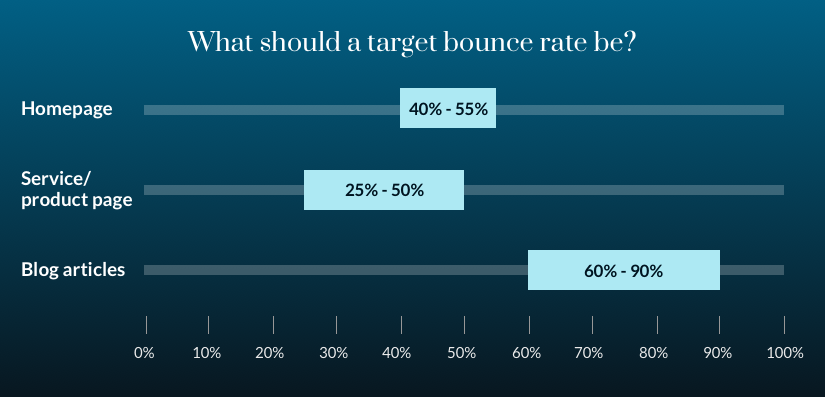Is your website outdated and costing you customers?
Your company website acts as a 24/7 calling card for your business. It’s a trusty communication tool and hopefully your company's best business development tool. Dated design, poor content, and several other factors damage the brand and lead to lost sales.
Wondering if your business’ website is due for an update? This article reveals some telltale signs that will let you know when it’s time for a redesign.
Summary
Signs That It's Time For A Website Redesign
- Products or services have changed
- Dated look and feel
- Poor lead generation
- Not optimized for mobile devices
- Poor navigation
- Hard to update without a developer's involvement
- High bounce rate
- Too much company jargon
- Low conversion rate
Products or Services Have Changed
Most companies constantly are evolving their products and services. Maybe they change completely or are delivered differently.
Has the company website been updated to accommodate new or amended products and services your company offers?
Are the latest value propositions clearly articulated online?
Are photos, videos, documents, case studies, and product/service explanations up to date?
If not, the existing website is due for a revision.
Dated Look and Feel
Just like hairstyles and fashion trends, things change. Websites get out of date quickly, especially if it hasn’t been updated in years.
No company is exempt from the need to keep its website design current. Website visitors form an opinion of your company in less than a second. Give the impression that you’re modern and current with a modern website design.
First impressions made online are almost solely related to visuals. A crowded homepage that's cram-packed full of written content, links, and information is an outdated website design. Choosing a clean design and simple, intuitive navigation will be more visually appealing and usable to your prospects.
While a pre-made Wordpress theme might be a cost-effective solution, they are often fraught with problems.
- Free themes are too simple for a business wanting to make a good impression.
- Many paid themes are too trendy. Other themes use outdated design elements. Still others don’t include calls to action, harming your conversion rate. Many include page layouts that aren’t relevant to your business.
A custom website design process will incorporate your brand and give prospective customers the information they need.
Poor Lead Generation
The company website doesn’t exist as just a verification tool for your small business. Inquiries from the website should lead to sales opportunities that create new revenue. Here’s what prospect interactions with your website should look like:
- A prospect searches Google for a product or service your company sells. They find your listing in the search results and visit your website. After browsing around, they find a webinar invitation on your website and register.
- Several website visitors fill out a short inquiry form to receive more information. They are expecting a sales consultation, but not a hard sell.
- Target audiences read your website content and it’s so insightful and original that they decide to download a whitepaper. In order to get the whitepaper, they fill out a landing page that gives your company their name and email address.
Your digital marketing strategy might be using your website for lead generation purposes, or simply as a verification tool. Whatever your business goals, your website should be a library of helpful content that engages your target audiences.

Not Optimized for Mobile
80 percent of B2B buyers look for buying information on their mobile devices. Web visits from mobile users are up 222% in the last seven years. Websites that are optimized for mobile browsers are considered “customer friendly” and promoted in search results. The ability to read a website on different screen sizes is a major factor for search engine optimization.
Part of the website redesign process should be designing for different mobile screens. A website designer should show how the website formats itself on different screen sizes. Responsive web design is a best practice in 2020. It allows components of your website to move around depending on the size of the smartphone or tablet screen.
A mobile-optimized website isn't an optional benefit - it's a requirement of having a website that's built for the modern reader. It's a necessity for all brands.
Unsure if your company website is mobile-friendly? Visit Google's Mobile Friendly Test, enter your website address, and see the results.
Poor Navigation
Website visitors want to be able to quickly find what they are looking for. Good navigation isn't just about having a user-friendly menu bar that is consistent on all pages.
Most website redesigns don’t take into account how content should be named, organized, and linked together. Knowing your prospects' use case and stage in the buyer's journey will help you understand how to organize content. Google Analytics can help you see usage patterns and "paths" that reveal important sales information on your product or service at just the right time.
Too Hard to Update
A business website should be changing regularly. Product and service information needs to be kept up to date. New insight articles should be published regularly that add to the knowledge pool in your industry. Your content management system should be upgraded to the latest version to enhance performance at least quarterly.
Unfortunately, many websites are built with a developer in mind, not a business user. This means that someone who knows how to code must update the website. A business website should be easy for a business user to update. Adding photos, videos, pages, articles, and documents should take minutes, not hours.
High Bounce Rate
Google Analytics holds valuable website performance information, including a website’s bounce rate. Here’s Google’s definition of bounce rate in case you are wondering.
What should a target bounce rate be?
- A good bounce rate for a homepage is between 40% - 55%.
- A good bounce rate for a service or product page is 25% - 50%.
- Blog article bounce rates are normally a lot higher than homepage and product/service pages. Acceptable bounce rates for blog articles can range from 60-90%.

Here are some factors that affect bounce rate.
- Page speed or load speed. Your website may have a load speed issue even if you don’t notice it.
- Too much jargon, or not enough focus on customer needs.
- How interesting and relevant web page content is to prospects.
- Cleanliness of the page. Pages should not be cluttered, have excess motion or distractions.
- Ability to easily scan web pages.
- Optimization of pages for both desktop/laptop screens and for mobile/tablet screens.
Where can you find your website's bounce rate? If you're a Google Analytics 4 user, you'll know that there's no mention of "bounce rate" anymore. Instead, "Engagement Rate" is a similar metric in GA4.
Too Much Company Jargon
- "We've been in business since 1932."
- "We specialize in complex solutions to your problems."
- "Our team has over 30 years of experience."
- "Unparalleled customer service."
Chances are your company website has one or more of these phrases. Not only do these distinctions sound exactly like your competitors, but they don't speak to your potential customer's needs.
If your website focuses more on your company than your customer, then it needs to be changed.
The best websites place a focus on customer needs. Especially in B2B, prospective customers need information to share and make buying decisions. Websites should contain a library of content that focuses on the customer, including:
- Comparisons of your company’s products and services versus competing technologies or methods.
- Blog articles containing detailed answers to common questions.
- Various forms of content, including written words, video, photos and illustrations.
- Plain language explanations of products and services offered.
Low Conversion Rate
If people are visiting your website but not inquiring, there’s a conversion rate optimization issue. At least one or two visitors per hundred should inquire about your products or services.
A low conversion rate is often caused by the same issues as a high bounce rate. Many websites we review lack calls to action. A prominent call to action on every web page can encourage customer engagement. We have a free article to give you a step by step process your design team can use to fix a poorly converting website page.
We’ve also created a free calculator so you can find out if your website has a conversion rate problem. This calculator will also tell you if the conversion rate is acceptable and where to start improving. We also have a free article on 7 steps to optimize your website. You can also request a website review conversation with one of our experts.
# # #
A redesign doesn't have to mean overhauling your entire website. Small tweaks, upgrades and improvements can make all the difference to the user experience.
Years of research have shown that prospective customers will judge your business based on their experience using your website. If it’s hard to use, not informative, and out of date, it’s not a useful tool for them. If your site has these issues, it’s time to consider a redesign.
This post was originally published on April 26, 2016, and last updated on October 31, 2023.









